Spending 3 days in Rome
I visited Rome in early spring for a couple of days, as part of my birthday present. Honestly, I wanted to visit Rome since I was a little kid and my interest in this city grew more when we were studying ancient history at school. Thus, I created a map and a detailed itinerary with all the landmarks I would like to visit there and the Coliseum was on top of my list.
The Eternal City wasn’t built in a day, it needed much more time to develop, but slowly and steady it became the most-known city in the whole world. There are many legends that suggest how the city was founded, but the most prominent is that of Romulus and Remus. They were two brothers that were raised by a she-wolf and when they became adults they started ruling over the city. However, in a heated argument between the two brothers Remus died, leaving Romulus the only right heir of the city. That’s how Rome got its name – after its first ruler.
Later in time, Roman people created their own culture with their own religion, literacy and architecture, that resembles quite a lot that of the Greeks. In addition to that, they were known for being great merchants, which helped them develop the city a lot in the future.
After that, the Romans started their expansion by fighting with most of their trade rivals or the tribes that were coming from the north part of Europe. Eventually, they became the rulers of the world and when Caesar became the ruler of Rome, the Roman Empire started flourishing and the rest is history.
Nowadays, Rome is one of the busiest cities all over the world. The city hosts millions of visitors every year that want to tour around the city and come closer to its worldly known historical monuments. That’s why I decided to spend a couple of day in the Italian capital and explore further what it has to offer. And trust me, it has a lot to offer.
Where and what to eat while in Rome?
While in Rome you should definitely try pizza and pasta, but there are also other tasty dishes I would advise you to try. One of the best places to try some Roman pastries is Ciuri Ciuri, where you can also try the Sicilian famous pastry the cannoli. You will easily find the cannoli as it is made with tube-shaped fried pastry dough and is filled with sweet creamy ricotta. Absolutely delish!
The Pane e Salame is a restaurant next to the Trevi di Roma fountain and offers one of the best sandwiches in Rome for around five euros each. There you can also try Roman pizzas and other dough inspired meals. There is also another good place to get very tasty sandwiches and it is Bread-in that is close to the Pantheon in Rome. My favourite sandwich there is with prosciutto, tomatoes and rúcula. The sandwiches in this restaurant are around five euros for a sandwich, so it is quite reasonable for such delicious paninis.
Another good place is Pizza Florida where you can buy delicious pizzas on the go for less than two euros. My favourite pizza options of theirs is the Margarita, so give it a try.
Last but not least, if you want to get fine Roman wine or excellent prosciutto you can go to Eataly, which is a large shopping centre offering wine from all regions in Italy, as well as lots of dried meat options, cheese and other appetizers. I went there just before leaving Italy, so I can bring some nice stuff home as presents and I have to say that I was more than happy with my purchases.
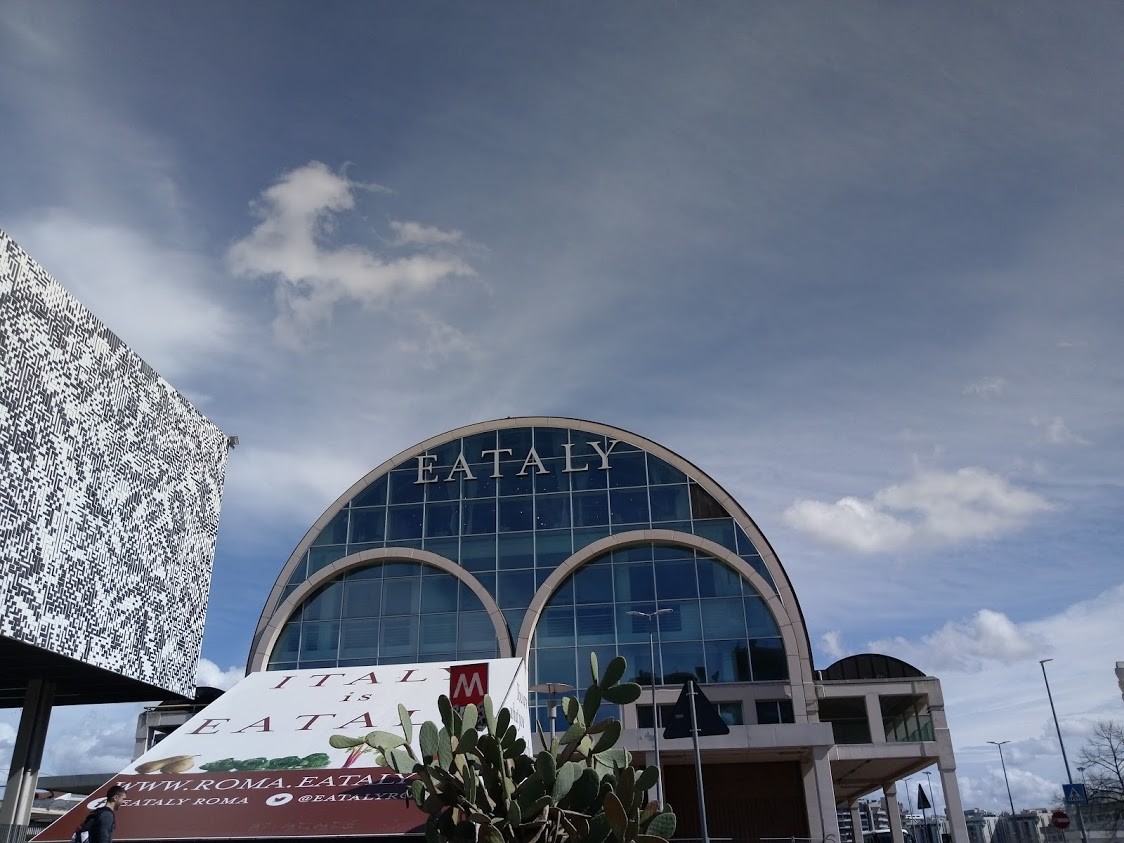
The best time to visit Rome?
Every month is good for visiting Rome, but I would say that there are months that are more pleasant for visiting the Eternal City. The early spring or autumn months to me are the best time to visit Rome, as it is definitely less crowded, prices slightly lower and accommodation is not that scarce, as in peak months. Furthermore, the weather during early spring and autumn is quite nice and sunny, which makes it pleasant for walking around the city, without sweating or freezing.
The best way to go around in Rome?
Honestly, the best way to go around Rome is on foot. I know it might sound a bit crazy, but trust me, everything in Rome can be reached easily by walking especially the most famous landmarks. However, I used its public transport to get faster to some spots and the ticket is 1.50 euros and is valid for an hour and fifteen minutes for all types of transport like metro, bus, tram and trains. However, if you prefer to use public transportation to get around you can also get the daily pass, which costs six euros or the weekly pass, which is 24 euros. There is also an option for short stays and for 3 days you can get a pass that costs 16.50 euros. The tickets to the buses can be bought almost anywhere in the metro, newsagents or the special machines for ticket selling.
Day One
In the first day, I tried to explore most of the well-known monuments around Rome’s city centre. I have to say that walking around the city center is a tiring job, so be prepared.
Colosseum
My first stop was the Colosseum, which amazed me with its grandiose size, massiveness and architecture. It is a truly huge amphitheatre. The Colosseum was built around the eightieth years after Christ and was used for around four centuries before it was abandoned. During its active years, there were lots of gladiatorial combats, wild animal fights, chariot races and they even filled it with water, so they can re-create a sea battle.
To enter the Colosseum, I would suggest buying the tickets on-line from its official website for 16.00 euros, which also includes an additional visit to either the Palatine, Roman Forum or the Imperial Forums. By buying your tickets on-line you will save yourself time, as there is an option to choose the hours, in which you would like to visit the Colosseum and also won’t have to wait hours in line to get inside.
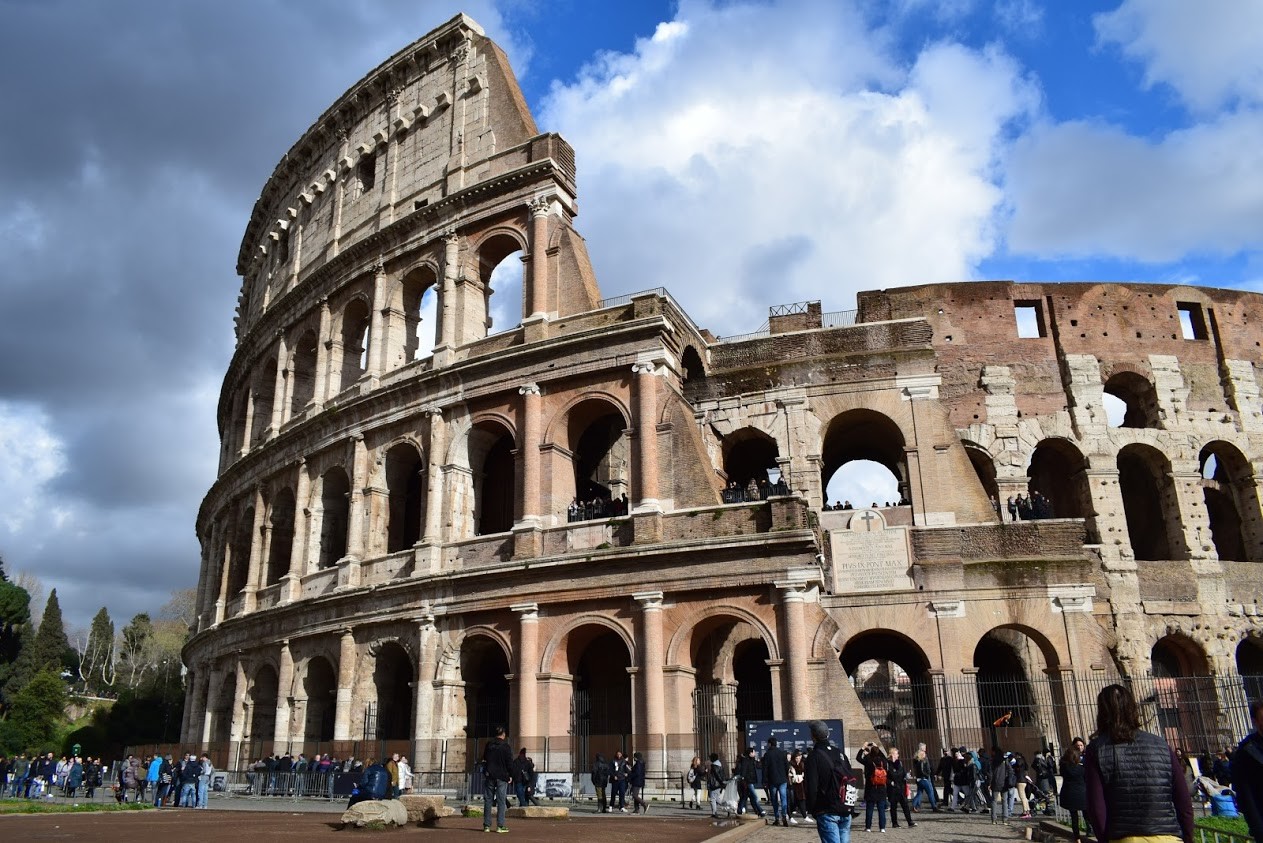
Arch of Constantine
Next to the Colosseum was standing tall the grandiose triumphal Arch of Constantine, which was built around the 300th years. The story says that the Arch of Constantine was built to memorialize the victory of Constantine over the Roman Emperor back then. The arch is a very impressive piece of art, standing 21 meters high and almost 26 meters wide, which is made out of marble and has 3 arches.
The inscription on its top is in Latin and is expressing its gratitude towards Constantine the Great who succeeded in winning against the emperor Maxentius. It also holds some very well-preserved Roman sculptures and other additional ornaments, which make the Arch of Constantine one of the most interesting monuments in Rome.
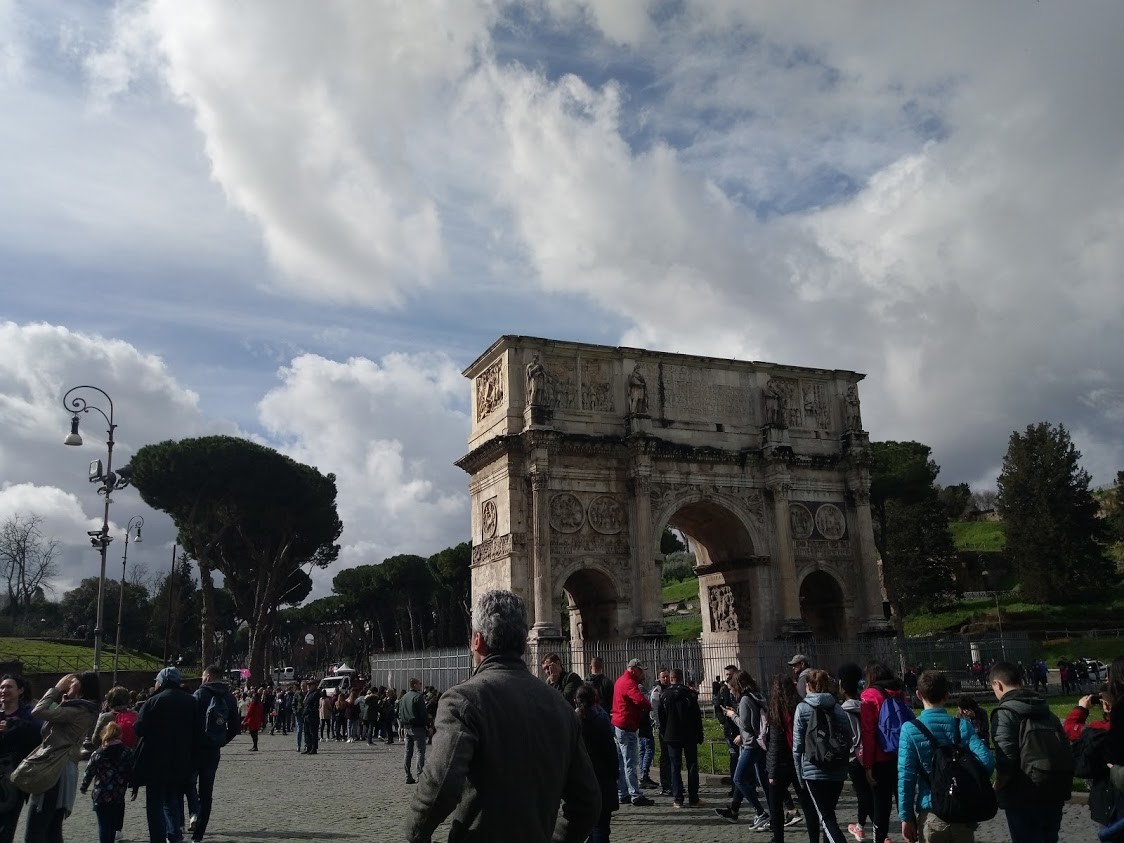
Arch of Titus
Then, I went a bit on the left on the “Sacred road” that leads to the Temple of Venus and Rome, there was another worth visiting monument – the arch of Titus. This arch compared to that of Constantine was not that grandiose, but was still massive. The story of the arch tells that it was built to immortalize the victory of Titus and his father Vespasian over the Jewish strike in Judaea.
Pantheon
The Pantheon in Rome is one of the must-see landmarks and is also one of the most important buildings that are still well-preserved since ancient times. The Pantheon of Rome served as a place for worshipping all of the gods in the ancient times and then a couple of centuries later it was turned into a church. To enter the Pantheon is absolutely free and I would advise you to do it in the afternoon or early in the morning, as there are not so many people then.
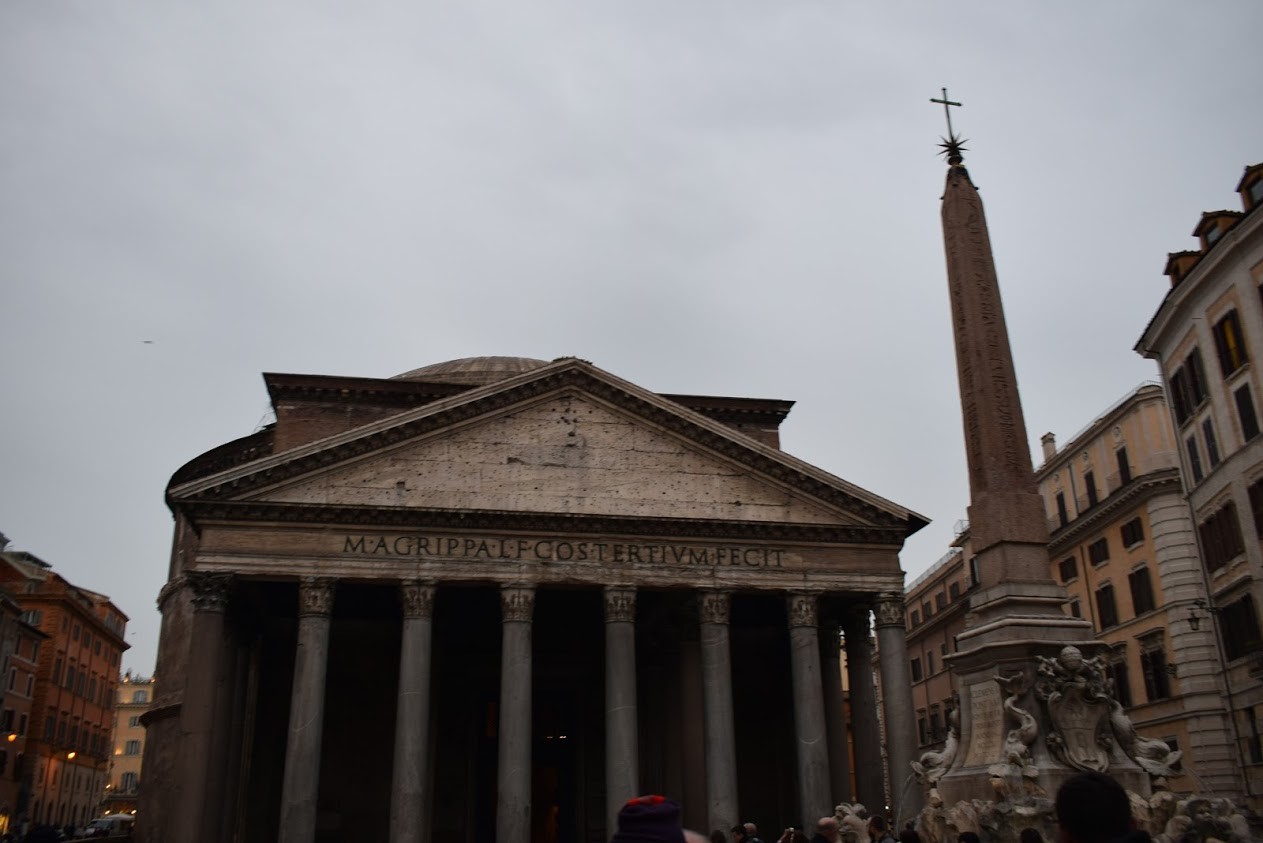
While exploring the Pantheon I was mesmerized by its size and its architecture. At the front, it had sixteen columns holding its huge arch and once I got inside I saw that huge dome with a hole in it, which lets the light inside the Pantheon. A fun fact that I learned while I was walking around it was that the dome of the Pantheon is the only unsupported dome in the whole world till this day. How amazing is that?
Furthermore, on the right side of the Pantheon, there is the Basilica di Nettuno or what is left of it. It was a church built by Agrippa in Rome to honour Neptune, the god of the seas. While walking up the street I stood for a while enjoying its beautiful remaining with sea-inspired ornaments. To my surprise, they were very well-preserved too and it seems that time has not affected them in any way.
Circus Maximus
Going further around Rome I found Circus Maximus, which was one of the oldest and largest amphitheatres built for chariot races. Nowadays, there is not so much left of it, but only one terrace, but near it, there are nice benches where you can just sit and enjoy the view of the Circus Maximus and the Palatino Hill standing next to it.
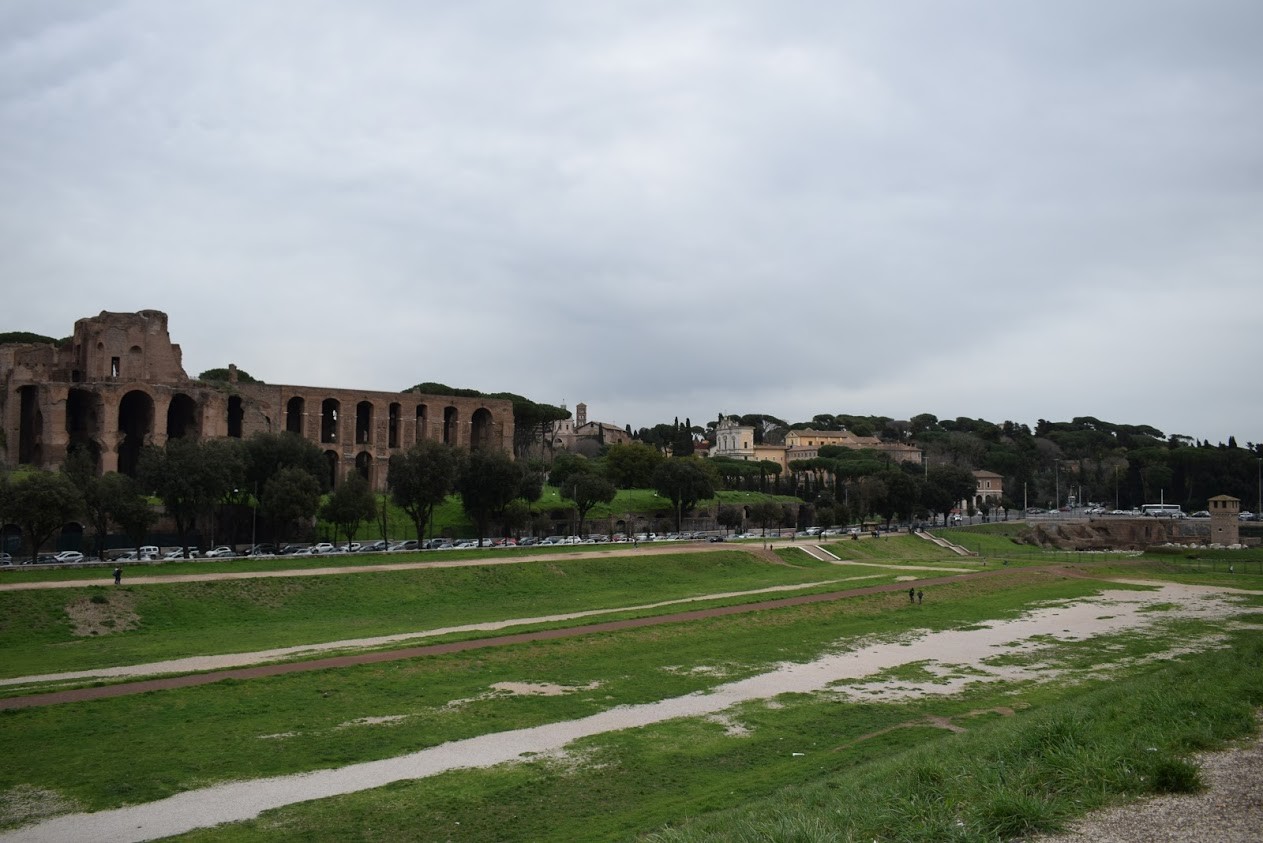
Palatine Hill
Palatine Hill is known to be the birthplace of Rome thousands of of years before the birth of Christ. It was also the place where notable and wealthy people would build their own houses and live there.
I would say that the Palatine Hill is totally worth a visit, as it has lots of well-preserved houses from the ancient Roman period. Furthermore, it is a very huge place to explore and it might take around an hour or two to check everything. Luckily, in the afternoon there aren’t many people waiting in line to get inside, thus it is quite easy to get in.
Piazza Dei Cavalieri Di Malta
Finally, I finished the day at Piazza Dei Cavalieri Di Malta. However, it holds one of the most interesting spots in the Eternal City and it’s the little keyhole to its main door from which you can see the Vatican City. Typically, for Rome, I had to wait for a while in line to take a glimpse of the Dome of Saint Peter in Vatican City surrounded by lush vegetation. I would say that it was absolutely worth the wait and I suggest you add it to your list of things to do while in Rome.
Day Two
On the second day in Rome, I decided to dedicate my time to explore more its gardens, famous fountains and squares.
Rome Rose Garden
Since the place was near the Aventine hill I decided to start my day with a walk around the Rose Garden of Rome. From local people I learned that from the Rose Garden you can overlook the Circus Maximus and the Palatine hilland that was one of the reasons why I wanted to visit the garden. However, when I arrived it was closed for visitors and I could not get in, but I could see that the garden was quite huge with lots of roses around that have not blossomed.

Only after my trip, I heard from friends that the garden is usually open from April to June, thus I will definitely visit Rome again so that I can go inside.
Bocca Della Verità
Bocca Della Verità or the Mouth of Truth as most people know it is a tall round stone in which a human face is carved. As the story tells, it was used as a lie detector in the past and it was cutting the hands of liars. To get to the Mouth of Truth is very easy to walk to, as it is close to the Rose Garden and the Circus Maximus and is close to the Palatine bridge.
Turtle Fountain
After that, I went a bit to the north part of Rome to check out its famous fountains and squares. First, I stopped by the Turtle Fountain, which was designed and built by Porta, who was a famous Italian sculptor during the sixteenth century. The fountain was set in the nice square of Mattei and was made out of bronze and marble, as I can tell after looking at it for a while. The most interesting thing that caught my attention was its sea-inspired details, which included a couple of dolphins and small turtles. Overall, the fountain was very beautiful and a nice place to spend some time to rest or observe it.
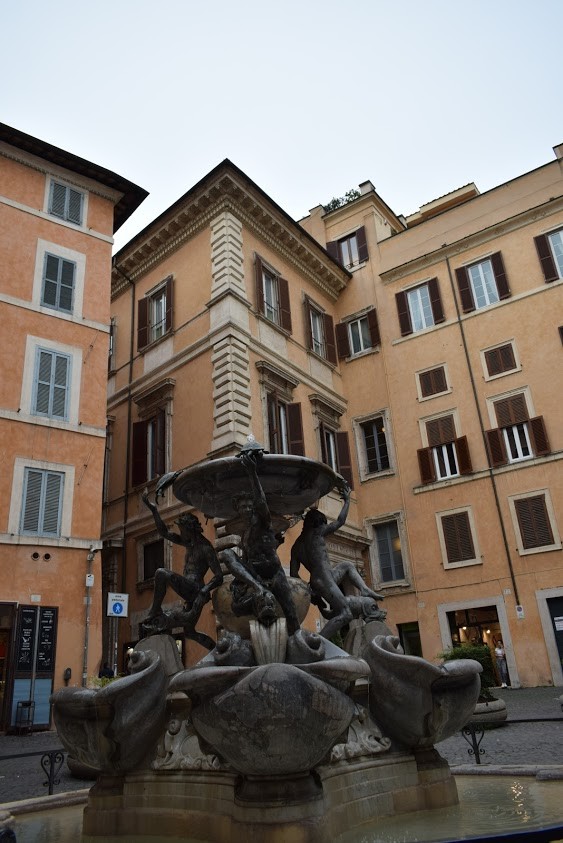
Piazza Venezia
Then, I headed to the biggest roundabout in Rome – the Piazza Venezia. This is also the place where the main roads in Rome go through and each of them can lead you to a different part of the city. One of the main roads, Via Dei Fori Imperiali, leads you directly to the Coliseum, another one goes to the Jewish quarter and another one to the Piazza del Popolo (the People’s square) or to the Marcello Theater.
The Piazza Venezia was built around the fifteenth century by a Venetian cardinal that later became Pope Paul II. The building was also used as an embassy of the Republic of Venice and later in time, it was used by the Italian government as a headquarter.
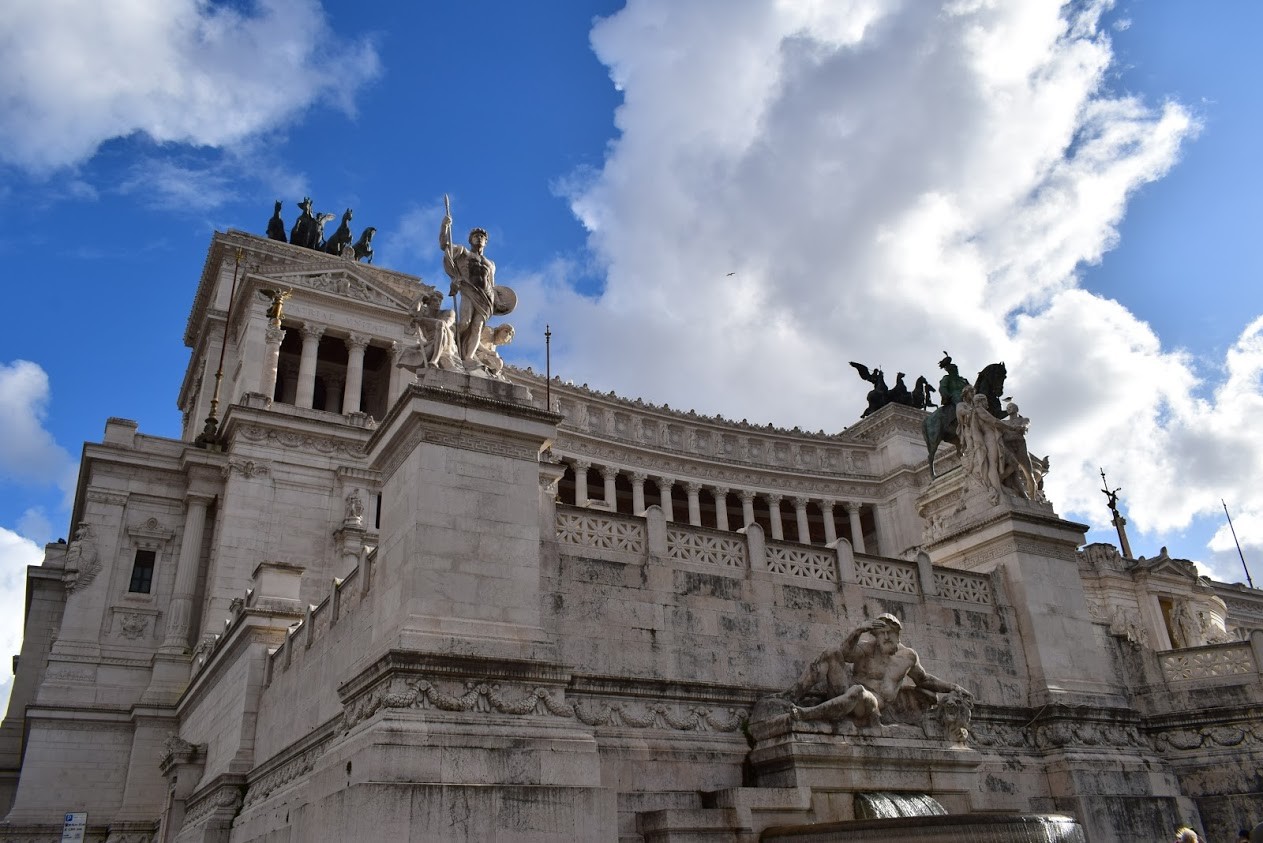
The building is simply stunning made out of white marble and although a lot of people are arguing that it is ruining the spirit of the city of Rome with its new outlook, it is absolutely marvellous. In front of the building is the bronze statue of the first king of Italy - Vittorio Emanuele II. Going further, inside the building are a couple of fountains and lots of ancient Roman sculptures.
Finally, I went up to the top of the building from where I got the most beautiful view of Rome until this very moment. From Piazza Venezia, I saw most of the most famous landmarks of the city like the Coliseum, Marcello Theater, the Romans’ Forums and the Vatican City. It was an absolutely divine vista and I would advise everyone to visit this place, as it offers great spots for overlooking the city from above.
Via Dei Fori Imperiali
After admiring Piazza Venezia, I went on the Via Dei Fori Imperiali road to check out one of the oldest buildings and ruins of Rome. The first one was the Column of Trajan, which was built to immortalize the victory of Trajan over the Dacians that were threatening the existence of the Roman population. Then, there was the Forum of Trajan or what was left of it, as most of the ancient buildings were destroyed and only columns or some stairs and walls were still holding. That why I was using my imagination and try to re-create everything in my mind. However, the Forum of Trajan was built around the first century after his victory over the Dacians. Just behind the Forum of Trajan is the Market of Trajan, which includes the remains of a multi-level building with apartments and shops on the ground floor. It is absolutely fascinating that those tall buildings are standing strong to this day.

In front of Trajan’s Forum and Market is the Forum of Caesar, which is just behind the Piazza Venezia. It was built by Caesar fifty years before the birth of Christ and was the place from where he ruled and also the Senate was doing its business. Inside the Forum of Caesar was also the Temple of Venus, which was worshipped by Caesar and many believed that it is his ancestor. However, the temple of Venus was fully finished after Caesar’s assassination, thus he could not witness its marvelousness. Nowadays, there is little left to the imagination, but there are lots of columns that remain from that huge temple of Venus and also the Forum of Caesar.
A bit behind the Forum of Caesar is the oldest Roman Forum, which originated with the establishment of the city of Rome. In the beginning, the Roman Forum was simply a big open marketplace where people would come and trade their commodities. Later in time, the importance of the Roman Forum grew and it became a place where one of the most important buildings were built in. Some of them are the Temple of Vesta, the goddess of the family and home, the Temple of Saturn, the god of agriculture, the Temple of Castor and Pollux. Furthermore, the Roman Forum had a Senate house or the Curia, which was used to accommodate various political events, which can be seen by walking on the Via Della Curia in Rome. In addition to that, there was the Rostra or the I Rosti, which was a platform where people could give speeches and today only a few stairs are left of it along with a big half-round platform. Last but not least, there is also the Sacred road that leads to the Coliseum of Rome and also passes through the Arch of Titus. Thus, it is quite fast and easy to get to the Coliseum by the Roman forum by just using its main road, which was used for ceremonies ages ago.
The Trevi Fountain
After walking all day around one of the most famous buildings and ancient remains I ended up my day at The Trevi Fountain. What caught my interest in that fountain was that it was quite different than most of the fountains in Rome. It was like glued to the building behind it and was simply stunning with its Renaissance statues all around and marble walls.
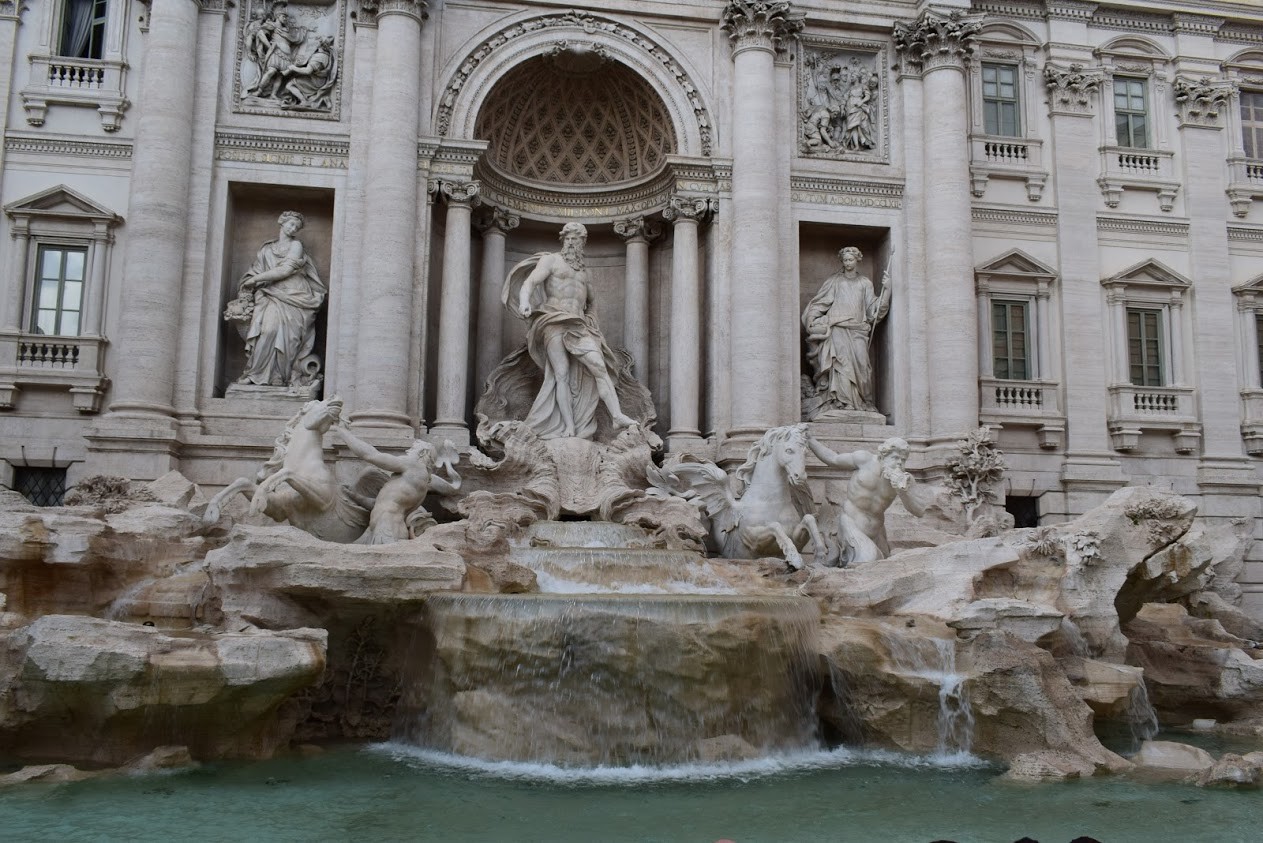
There is a legend related with the fountain and it says that if you throw one coin, you will return to Rome one day, if you throw two coins you will fall in love with an Italian and if you throw three coins you will marry and Italian. Thus, if that is what you wish for, do not hesitate and throw some coins inside.
The Trevi Fountain to me is one of the most beautiful fountains I have even seen. Thus, it’s no wonder there were lots of people there at the end of the day trying to take pictures, throw coins or simply enjoy the beauty of the fountain. If I have to be honest, it was almost quite impossible to get a good seat in front of the fountain, thus I would advise you to go either very early in the morning or a bit late in the evening, so you can enjoy it.
Day Three
Day three in Rome started a bit late, as I decided to spend some time in the ancient city of Ostia, which is near Rome and next to the Tyrrhenian Sea. Thus, after I arrived in Rome in the afternoon I went to my place to relax for a bit and then went straight out to explore Rome a bit more. Since my place was near to the Tiber river I decided to cross the Ponte Sublicio and go straight through Porta Portese, which is a massive ancient city gate that leads you to the city of Vatican.
The Vatican City
In no time I found myself in the smallest country in the world – The Vatican. It might be small, but it is simply grandiose. Even during the night, the Vatican city attracts many visitors and is truly mesmerizing. Thus, I wondered around the Saint Peter’s square for a bit admiring its beauty and the night lights that were falling down on its tall statues and columns.

Unfortunately, I could not visit the museums of the Vatican that hold one of of the finest collections of art and antiquities that can not be found elsewhere. However, I saw the magnificent the Sistine Chapel from below and I would say that even from there it was simply divine.
However, I found out that the Vatican museums can be visited at night from April until October, which would create an amazing experience for people that would like to enjoy less crowded places like me.
Saint Angelo's Castle
After the Vatican city, I went straight from Saint Peter’s square to the other street where the Castel Sant’Angelo was. It was around castle that looked more like a fortress and had a marvellous bridge full of statues of angels. The interesting thing about the Saint Anjelo’s Castle is that it was a mausoleum for Hadrian, then a fortress that was used by the popes in Rome and finally it was turned into a castle. Furthermore, an interesting fact is that in the castle itself there is a secret corridor that leads directly to the Vatican city.
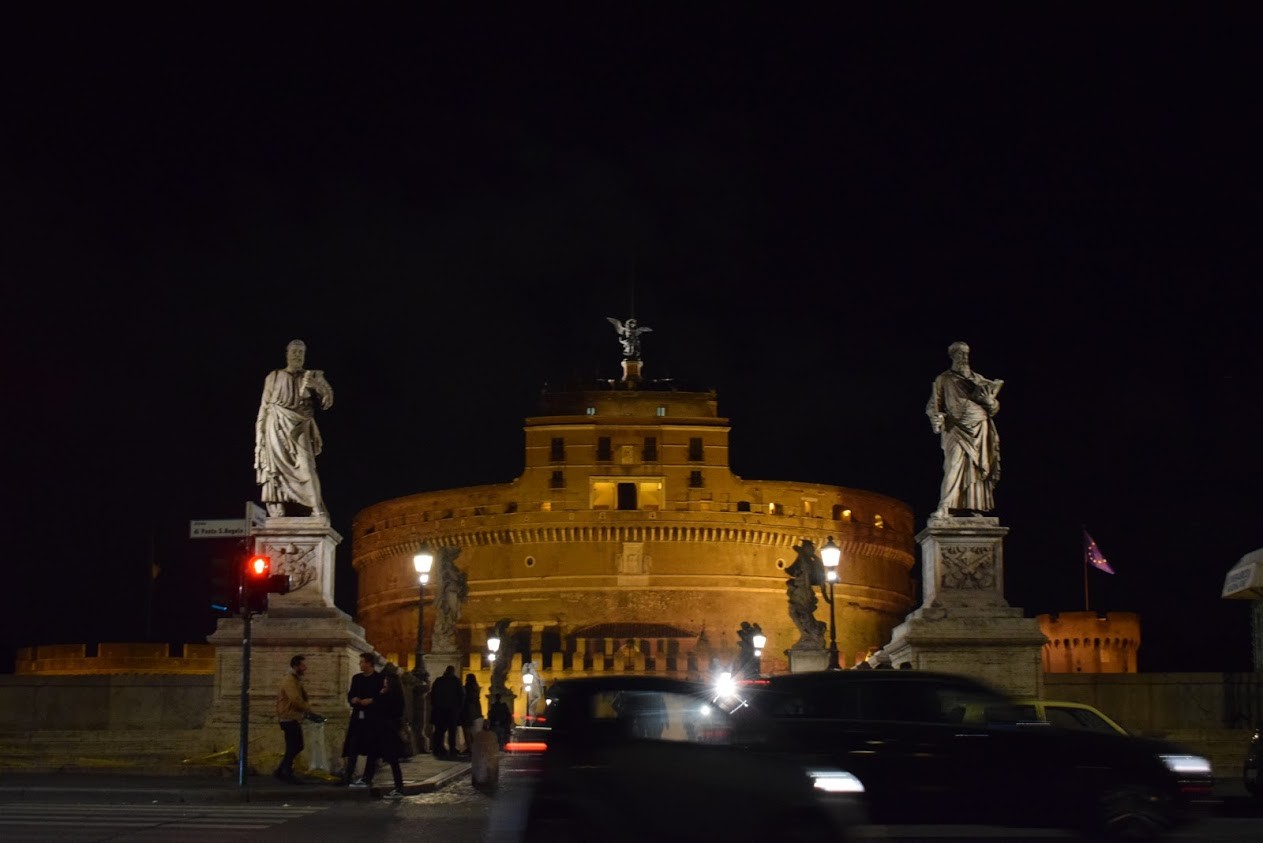
Piazza Navona
Then, after Saint Anjelo’s Castle, I went to see the Piazza Navona, which was once a city market in Rome. Nowadays, it is one of the most beautiful squares in Rome, built entirely in Baroque architecture with three huge fountains in its centre. The biggest fountain of the square if the Fountain of four rivers and it was built in the sixteenth century by Bernini. The fountain represents a marine scene with two-man standing on a cliff surrounded by sea. The other fountain is that of Moors, which shows a scene of a man fighting a dolphin and the last one is that of Neptune that shows Neptune fighting an octopus.
Piazza Navona to me is one of the most beautiful squares in the city of Rome and I would suggest that everybody visits it. Also, I think that one can truly appreciate its beauty at night, as the lights give it an even more beautiful look.
Spanish Steps
Finally, I finished my third day in Rome at the Spanish Steps, where lots of people gather to relax and enjoy the company of strangers. The Spanish Steps consist of 135 stairs leading to the Trinità dei Monti church and were built in the eighteenth century, which made them become a famous spot for most of the tourists.
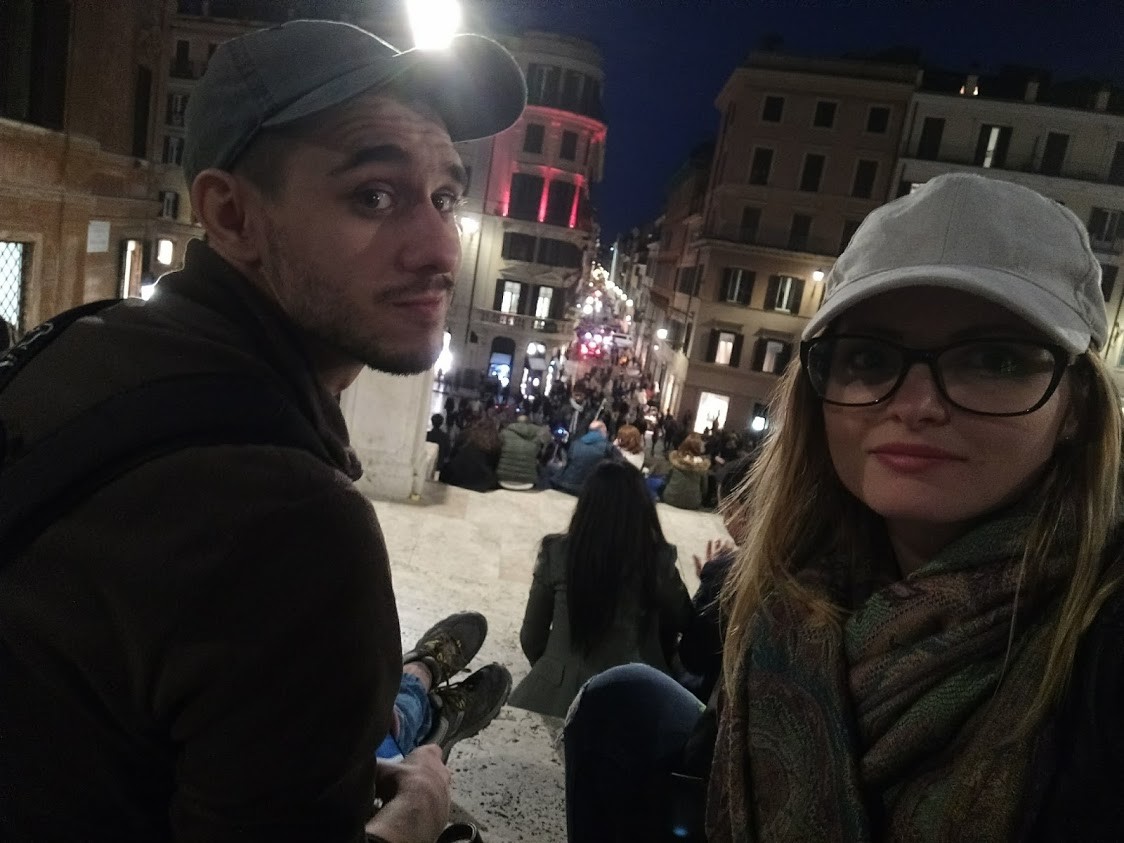
More interesting things to visit while in Rome
One of the interesting places I found while casually strolling around Rome was the Pyramid of Caius Cestius, which was built to be a tomb for the wealthy Roman magistrate Gaius Cestius around twenty years before the birth of Christ. The pyramid is close to a metro station and also to Roma Porta Saint Paolo train station from where I caught the train to the Ostia. Right next to the pyramid is the Porta San Paolo, which was a gate built in the third century and very well-preserved till this very day. An interesting fact is that the Gate of San Paolowas previously named Ostiensis, as it was on the road to the city of Ostia, but after that, it was renamed.
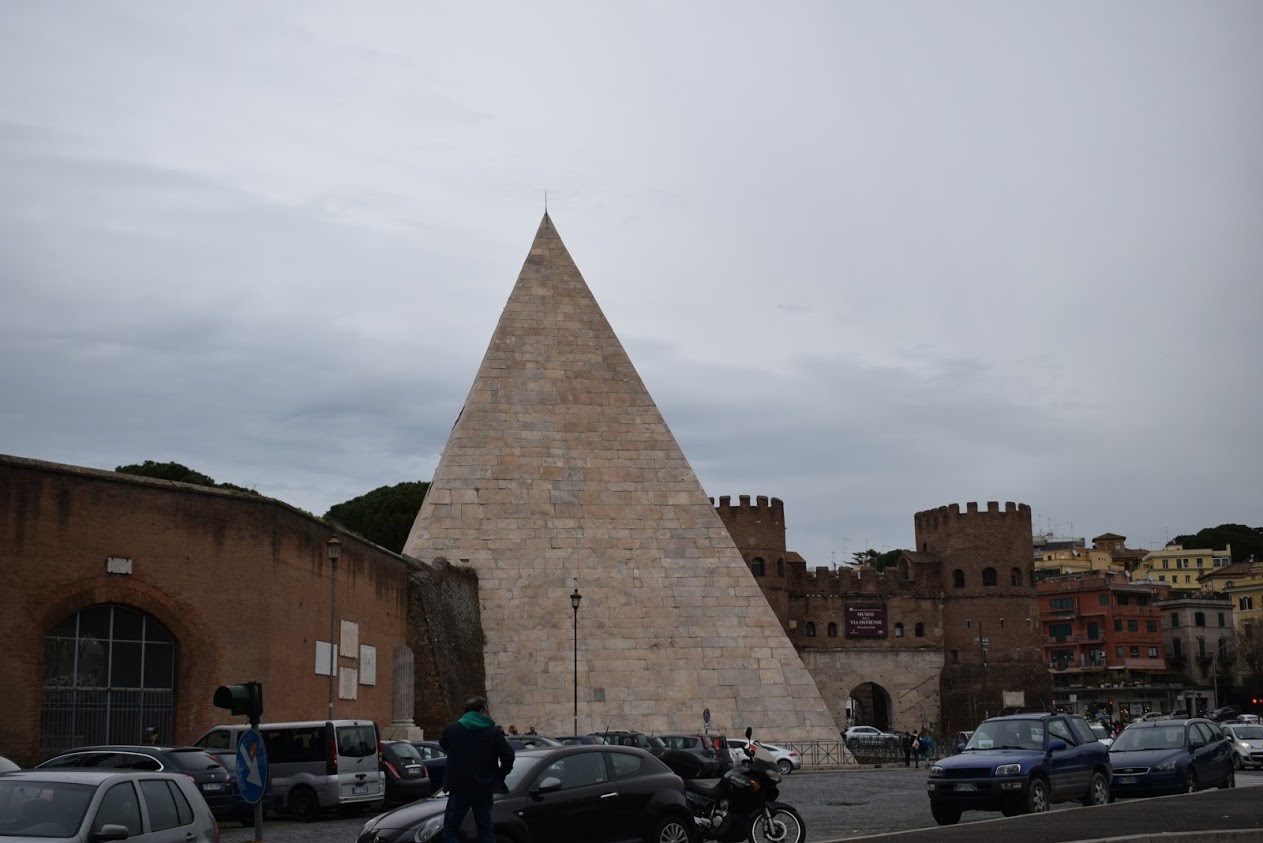
Another interesting spot that I visited is the Marcello Theater, which you can visit at any time of the day and is free of charge. There are two ways to enter the Marcello Theater and you walk around it and the ruins of the Temple of Apollo. The Marcello Theater was considered to be the largest and most important amphitheatre in Rome before the Coliseum and could gather up to twenty thousand visitors for each event. Most of the events that were held in the theatre were plays, musical events and recitals. However, later in time, the gladiator games became famous in both the Circus Maximus and the Coliseum and the Marcello Theater was not used so much anymore.
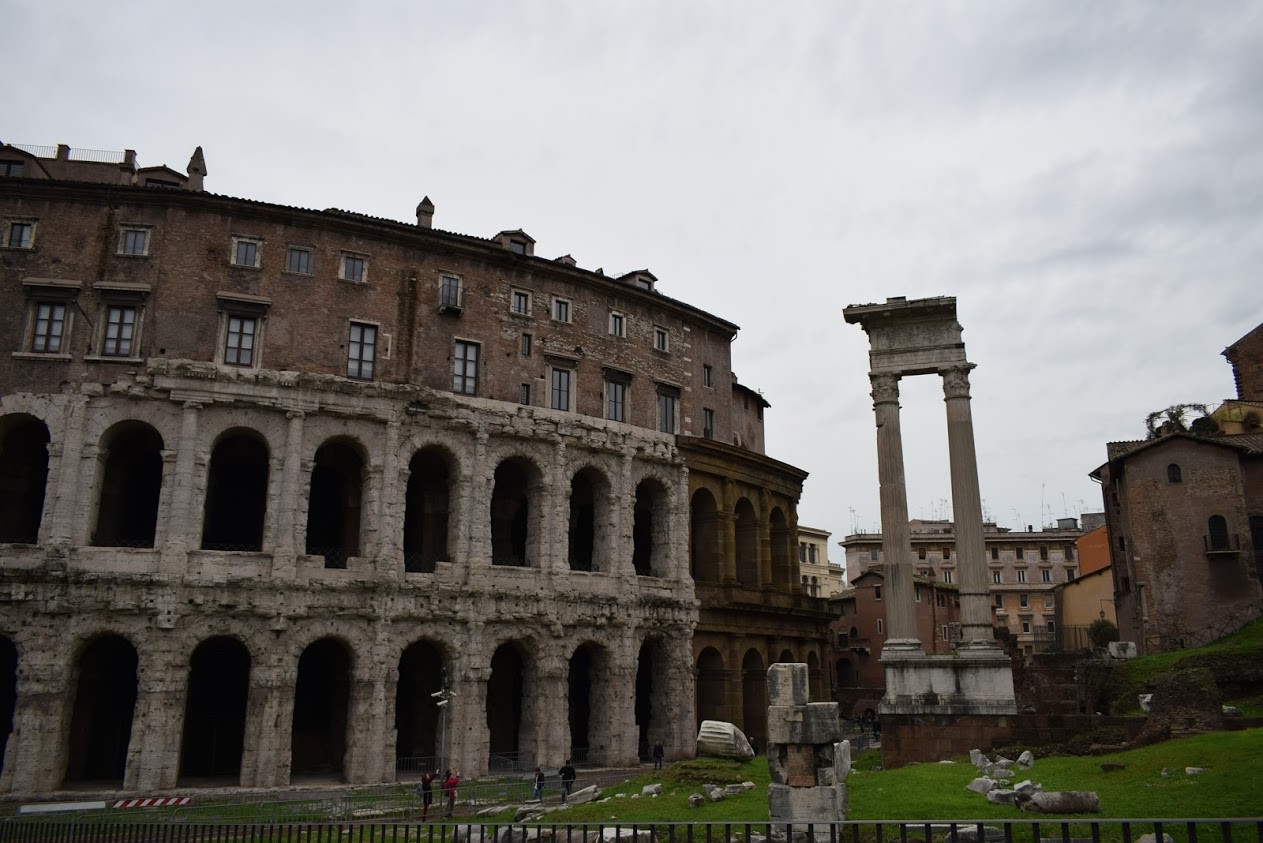
Isola Tiberina is another place I visited just out of curiosity, as it is the only island on the Tiber river in Rome. For many years’ people considered it to be a bad place, so they were not approaching it, but after the Temple of Aesculapius was built everything changed. Nowadays, the island is not a well-known spot for tourists and tends to be quite calm. I went there by crossing the Ponte Fabricio, which connects the island with the city and visited the Basilica di San Bartolomeo all'Isola, which was a very beautiful church with lots of frescoes.
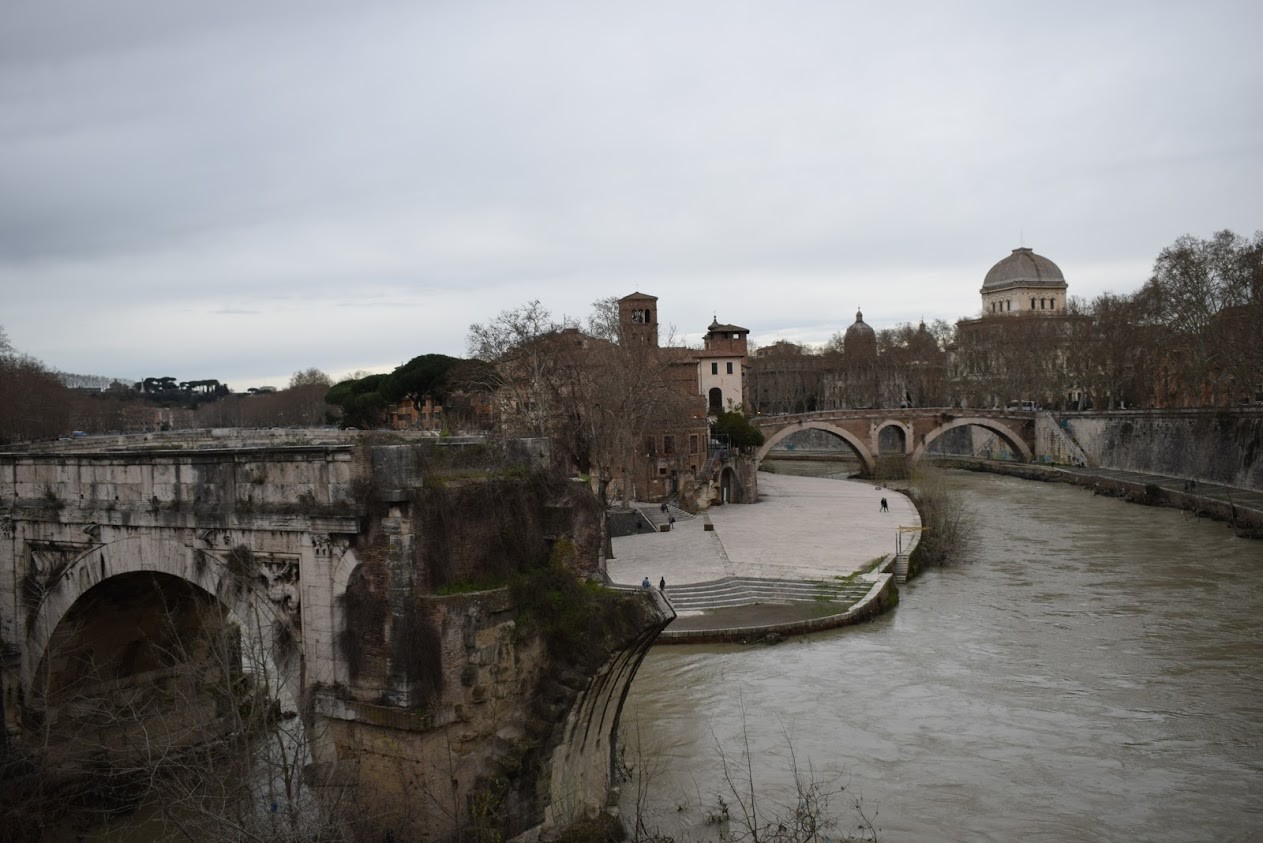
Rome also offers an ancient home to the cats of the city at Largo di Torre Argentina. This is also the place where Caesar was betrayed and killed ages ago and where four temples have been destroyed. However, people usually come here to interact with the cats or simply watch them sunbathing and playing around the ancient ruins.
Photo gallery
Content available in other languages
- Español: Tres días en Roma
Want to have your own Erasmus blog?
If you are experiencing living abroad, you're an avid traveller or want to promote the city where you live... create your own blog and share your adventures!
I want to create my Erasmus blog! →































Comments (0 comments)